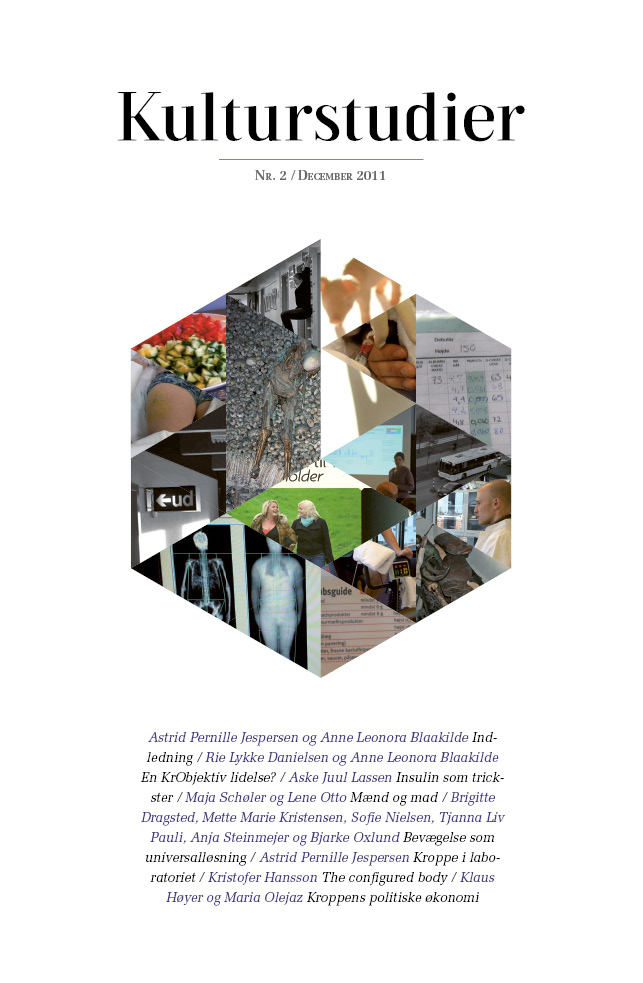Bevægelse som universalløsning. En antropologisk analyse af arbejdsmiljøprojektet Krop og Kontor
DOI:
https://doi.org/10.7146/ks.v2i2.5789Resumé
The article investigates the implementation of the workplace health project ‘Body and Bureau’ at the Department of Development at the Copenhagen University Hospital. The project attempted to intervene with the daily routines of staff members, who were believed to be bodily inactive while performing their daily tasks. In seeking to add movement and exercise to the daily routines of staff members, ‘Body & Bureau’ was understood to promote a new pattern of behaviour in the office that would help avoiding life style conditions such as overweight, hypertension, pre-diabetes and increased levels of cholesterol, generally considered to expose office workers to increased risks of poor health. The article addresses the ways in which the bodies of staff members were objectified by the project and the ways in which it influenced their everyday lives, and how it became a catalyst for new modalities of social relations within the office. Subsequent to individual health tests being performed, a number of staff members were classified as being overweight, which led them to form what they ironically dubbed ‘The Group of
Mourners’ in order to cope with their sense of sadness. About one month later, however, the group decided to become ‘The Group of Enthusiasts’, thereby taking on the tasks of changing the way they perceived of themselves and developing into an exercise support group. While the project had set out to promote movement as integral to the work routines, which was set against an undesirable notion of exercise for its own sake, the staff members ended up by pursuing the latter rather than the former. While the authors acknowledge the importance of tracing how bodies become objects of political power in the Foucauldian sense, they underscore that the nitty-gritty details of how projects play out in local social worlds such as the Development Department will eventually shape the trajectory of the intervention. Taking their cue from anthropologists Nancy Schepher-Hughes and Margaret Lock, the authors argue that a good starting point for the analysis of how a bodily objectifying project like that of ‘Body & Bureau’ intervenes in the social reality of an office is to pay equal attention to the political body, the individual body, and the social body. Similarly, these three perspectives on the body are used to explain how the state sponsored intervention politicizes the body of office workers, which leads to the testing and measuring of individual bodies, which finally becomes a collectivizing moment for staff members, because they eventually chose to socialize around their common condition of overweight, thereby producing new ways of relation in the office. The article thus concludes that although political power is definitely exercised in health promotion schemes, it is important not to forget the agency exercised by the people who make up the objects of such intervention.Downloads
Publiceret
Citation/Eksport
Nummer
Sektion
Licens
Tidsskriftet forbeholder sig ret til førsteudgivelsen, mens ophavsretten til artiklen tilfalder forfatteren.
Artikler udgivet af Kulturstudier licenseret under en Creative Commons Navngivelse-IkkeKommerciel-IngenBearbejdelse 4.0 International Licens





